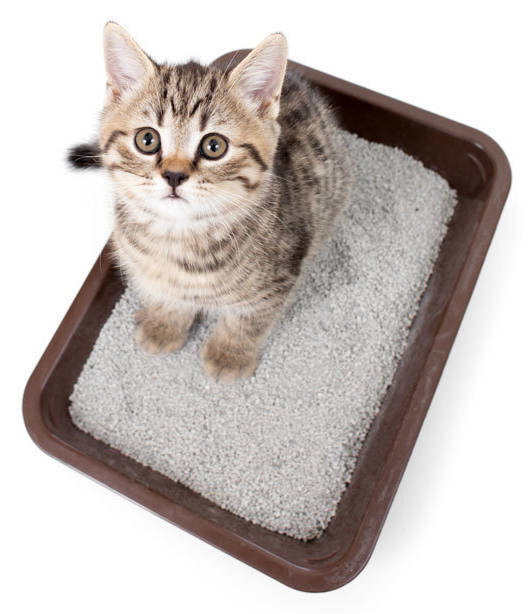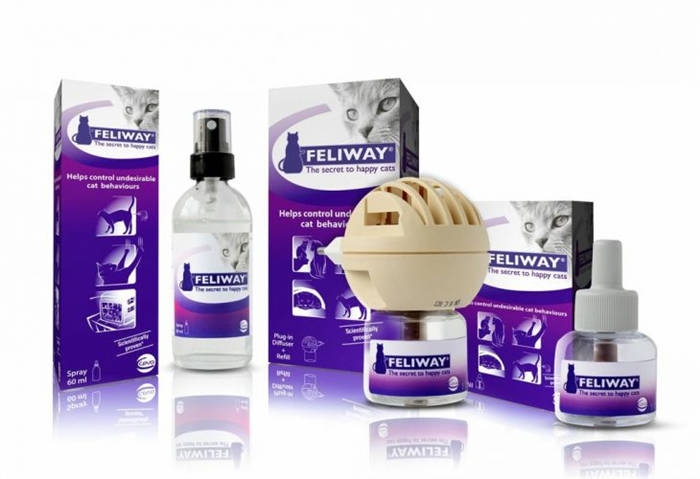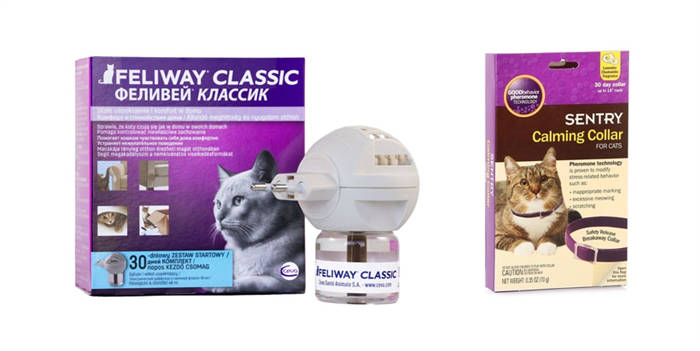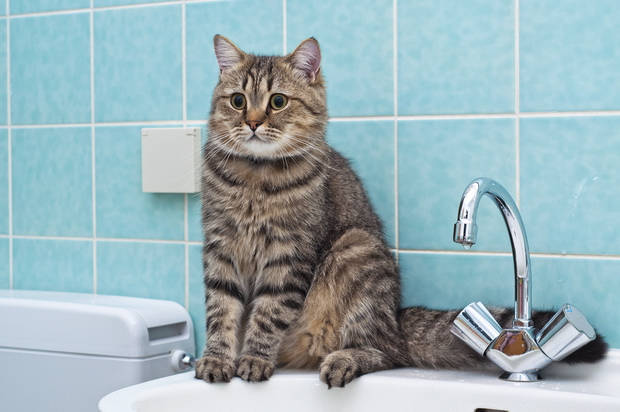From antispasmodics, drugs acting on the urethra (alpha-adrenoblockers) are usually recommended. They are mainly used in cats to reduce the risk of urethral obstruction against the background of SCI. Detrusor antispasmodics (oxybutynin) are usually not required, because pain impulses stop stimulating the detrusor smooth muscle and spasms stop.

Idiopathic feline cystitis – what is important to know about it.
I want to provide my readers with a translation of a very, in my opinion, sensible article about this disease. Here is a link to the original: https://en.wikipedia.org/wiki/Feline_idiopathic_cystitis#cite_note-:2-22
Idiopathic feline cystitis (IFC), is an inflammation of the bladder. The term idiopathic refers to an unknown cause of this inflammation. CIC can affect both males and females. It occurs more often in females, but if cystitis occurs in a cat, it is more dangerous.
Despite the common terminology, cases of idiopathic cystitis in cats, unlike episodes of cystitis in humans, are of a different nature. Cystitis in cats is usually not associated with a primary bacterial infection. If, however, examination reveals that feline bladder inflammation is indeed the result of an infection, it is described as feline urinary tract infection (FUTI) or feline bacterial cystitis.
However, UTIs in cats under 10 years of age are rare. In cats over 10 years of age, UTIs are more common, and idiopathic cases are much less common.
Idiopathic feline cystitis begins as an acute nonobstructive attack and is self-limited in about 85% of cases, resolving on its own within a week. In about 15% of cases, CIC can develop into an obstructive attack, which can become life-threatening specifically in cats. The symptoms of both nonobstructive and obstructive seizures are usually very similar.
Non-obstructive SCI.
The vast majority of cases of SCI are nonobstructive. In nonobstructive SCI, the underlying inflammatory process has occurred, but the disease has not progressed to the point where it interferes with urination (i.e., there is no urethral obstruction). Nonobstructive SCI usually resolves spontaneously within 5-7 days, regardless of treatment. The cat's lower urinary tract is inflamed and the urethral passage may narrow due to swelling, but it remains open and the animal can urinate, although with discomfort. Clinical signs that occur during an acute episode may include:
– Frequent trips to the litter tray combined with pushing due to involuntary urge to urinate because of an irritated and inflamed bladder;
– Feeling of incomplete urination in the cat;
– The formation of small volumes of urine;
– possible presence of blood in the urine;
– irritability, agitation in the cat;
– the cat may hide in a dark, quiet place;
– the cat is experiencing pain during the act of urination, characterized by vocalization;
– reluctance or refusal to urinate due to pain when urinating, and this causes the urine to collect in the bladder as in an obstructive episode and become concentrated, which contributes to the formation of crystals, increasing the risk of mechanical obstruction;
– loss of appetite;
– taking unusual postures to cope with the pain;
– urinating in places other than the litter box because the cat associates the pain of urination with the litter box;
– licking/excessive genital grooming;
– cat lying on cold surfaces, such as tile floor, trying to relieve pain.
Introduction
Cystitis in cats is an extremely common reason for owners to see a general practitioner. Urinary frequency in small portions, hematuria, periuria (urinating in inappropriate places), vocalization during urination, excessive licking of the perineal area – these are the symptoms that a general practitioner encounters almost every day. On the one hand, the pathology is quite easy to diagnose and treat. However, such patients are often able to confound the doctor, because the symptoms of the disease may not resolve against the background of treatment or recur shortly after the end of therapy.
Certainly, in cats with symptoms of cystitis, quite a large number of pathologies can be included in the list of differential diagnoses, although in practice doctors most often encounter three main causes: idiopathic cystitis, urolithiasis and urinary tract infection. Congenital anomalies, neurogenic disorders and other pathologies are much less common. However, idiopathic cystitis is the leading cause among these three in young cats and cats (Fig. 1).
This type of lower urinary tract inflammation in cats is not only the most common, but also very mysterious in its origin. Numerous studies have proven that stress is one of the factors provoking the development of SCI.
Currently, there is no clear understanding of the pathogenesis of stress exposure, but scientists are inclined to believe that the nervous system response to the stress factor is to blame.
The second extremely important component of the development and progression of SCI is highly concentrated urine. The thing is that urine itself is an aggressive environment. For this reason, the bladder wall is lined with two protective layers: the urothelium and the covering glycosaminoglycan layer (Fig. 2). At the same time, cat urine has one significant difference from the urine of other animal species – an extremely high concentration, thus being an aggressive environment. On the one hand, this feature of urine is a protective mechanism and prevents the development of bacterial flora in the urinary bladder, for which reason cats and cats at a young age (on average up to 8-10 years) are not prone to develop urinary tract infections. On the other hand, when the protective layer of the bladder is damaged, concentrated urine affects the unprotected wall, damaging it, resulting in pain and spasm. As a result, the animal begins to experience additional stress from painful sensations in the lower urinary tract, and the pathological circle closes (Fig. 3).
Thus, two mechanisms are involved in the development of SCI: stress and highly concentrated urine.
Diagnosis
Idiopathic cystitis is a sterile inflammation. Moreover, in its initial stages, it does not result in significant changes in the configurations of the mucosal and submucosal layers of the bladder; for this reason, the diagnosis of UC is often referred to as an exclusion diagnosis, as it is not characterized by any distinctive features. Despite this, making a diagnosis of SC is usually very simple and consists of only three steps: history, bladder ultrasound, and total clinical urinalysis (TCA). Ultrasound can rule out urolithiasis and structural abnormalities of the lower urinary tract, while the UAM confirms high density and no signs of bacterial inflammation (leukocytosis in the urine sediment). In addition to high density, the UAM often reveals other changes characteristic of SC, which include alkaline pH, increased protein levels in the urine, the presence of squamous and transitional epithelial cells, erythrocytes and struvite crystals in the urine sediment. Some of these changes may be more pronounced or absent, depending on the degree of damage to the bladder wall.
However, there are cases in which cystoscopy followed by histological examination of the bladder wall may be necessary to make an accurate diagnosis. During endoscopic examination, the urothelium shows characteristic areas of hemorrhage, while the configuration of the mucosa is often unchanged (Fig. 4). Histological examination reveals interstitial cystitis with moderate hyperplasia of the submucosal layer, dilated vessels and hemorrhages, moderate infiltration with lymphocytes, and mild fibrosis in the submucosal layer. The urothelium is usually ulcerated and its integrity is compromised (Figure 5).
Treatment
Correction of SC consists of two main steps: stress management and reduction of urine density by increasing fluid intake. Additional methods, depending on the degree of bladder wall damage and the severity of cystitis symptoms, may include the use of anti-inflammatory, analgesic, and antispasmodic drugs. Such therapy is primarily aimed at relieving acute symptoms rather than at long-term control of SCI.
In general, it is not possible to cure SCI, because animals with this pathology are predisposed to these changes. Since recurrent SCI can occur throughout the animal's life, especially in the presence of predisposing factors (stress, low fluid intake), therapy is mainly aimed at reducing the incidence of SCI recurrence.
Diagnosis
Urinalysis reveals hematuria (a large number of red blood cells). Bacteriological examination of the urine – culture on nutrient media – is performed to rule out infection. For such analysis, a sample of material must be obtained sterilely by cystocentesis, a puncture of the bladder through the abdominal wall. Although this procedure is performed without anesthesia, it has not yet become routine in veterinary clinics in Russia.
If cystitis recurs, culture is necessary. It is also recommended for all animals older than 10 years and cats with immune disorders:
Ultrasound and radiography can detect stones and sand in the urinary tract, assess the thickness and tone, and the fullness of the bladder.
In exceptional cases, contrast radiography or urethrocystoscopy may be required – most often when neoplasia is suspected.
Treatment

Although in 8 out of 10 cases the symptoms of cystitis will go away on their own, the doctor's job is to relieve the animal's symptoms of the acute period. The treatments used are:
For urethral obstruction and urinary disorders, alpha-adrenoblockers (Terazosin, Prazosin) are used, which relax the internal sphincter of the bladder and the urethral canal.
Long-term treatment implies a change in the conditions of confinement. Eliminating the cause of the stress is necessary to avoid a recurrence of the disease. Idiopathic cystitis is not a problem that can be solved by taking medication.
Means based on cat pheromones can be useful. The drug Felivay in the form of a diffuser or spray stabilizes the psychological state of the cat, with no side effects or contraindications. Analogous to a substance secreted by the cat's facial glands, it will give the pet a signal: "there is nothing to worry about".
Supplements with alpha-casoepine (derived from casein, a milk protein) and L-tryptophan (an amino acid from which serotonin, the happiness hormone, is formed) reduce the risk of depression and reduce stress. There are commercial full-fat diets that include both harmless substances:
Such a diet is suitable for long-term feeding of a cat with idiopathic cystitis if there are no concomitant problems:
Treatment
Since the most important cause of the development of chronic cystitis is the disruption of the protective mechanisms of the urinary system, the main task of therapy is to restore them.
This is achieved primarily by eliminating the main damaging factor, which is often sufficient in the treatment of acute cystitis. If we are talking about a chronic process, an important task is to create the conditions under which the restoration of protective mechanisms becomes possible. This is achieved by stopping the exposure to the damaging factor for a sufficient time for recovery (this, in particular, is the reason for long-term antibiotic therapy in the treatment of chronic urocystitis).
The cornerstone of the treatment of a UTI is antibiotic therapy. In a patient with chronic bacterial urocystitis, antibiotics are selected exclusively on the basis of a bacteriological culture of urine taken by cystocentesis. Antibiotic therapy is carried out from 14 days to 6 months, sometimes longer, if a relapse of bacterial urocystitis was observed shortly after the end of the antibiotic course. In such a case, along with antibiotic therapy, additional diagnostics is necessarily carried out to identify factors predisposing to the development of infection (structural abnormalities, immunosuppression, etc.).
It should be remembered that with significant damage to the wall, the microflora may change to be resistant to the currently used antibiotic even during antibiotic treatment. In this regard, in chronic patients it is recommended to monitor urine sterility both during therapy and after its termination.
The effectiveness of maintenance therapy in the treatment of chronic urocystitis is controversial, since most methods have no proven efficacy. However, the management of patients with severe recurrent urocystitis often becomes a difficult task for the physician.
- Correction of predisposing metabolic and structural disorders (episioplasty in the presence of vulvar recession in bitches).
- Avoidance (if possible) of urethral catheterizations and urethrostomies in dogs.
- Increasing the amount of fluid consumed by the animal.
- Acidifying agents (cranberry extract).
- Probiotics.
- Omega fatty acids.
- D-mannose.
- Treatment of the external genitalia with antiseptic solutions.
Dr. Shubin Veterinary Clinic
– Idiopathic feline cystitis is an inflammation of the bladder in the absence of infectious pathogens, characterized by the manifestation of signs of inflammation of the lower urinary tract.
– The exact causes of the disease have not been determined, it is just a syndrome that may have several underlying causes, acting together or separately.
– Synonyms: Interstitial cystitis, feline urologic syndrome и feline lower urinary tract diseases (few specific terms).
Pathogenesis
– The pathogenesis of the disease is not fully understood; the main role is assigned to a complex interaction between the CNS, bladder, and endocrine system.
– Cats with idiopathic cystitis are hypersensitive to various stress factors, such as conflicts between congeners (most often), changes in environment, feeding, weather, moving to a new home, holiday activity, etc. (see photo 3).
– The increased response to stressful stimuli is mediated through the sympathetic nervous system, with subsequent release of catecholamines, and changes in bladder epithelial permeability.
– With increased permeability, urinary irritants directly affect sensitive bladder neurons, causing pain and inflammation.
– Changes in the epithelial structure and function of the bladder, as well as, impaired urinary glycosaminoglycan dynamics are likely to play a role.
– Probable development of urethral obstruction by mucous plugs, which include protein, cells, debris +/- crystals
– Pathomorphological studies reveal submucosal edema, hemorrhage and vasodilation, and sometimes an increased number of mastocytes.
– Other likely predisposing factors for the development of idiopathic cystitis:
– Living in the home without walks;
– Keeping cats in groups;
– Diseases of the urethra (spasm, stricture, inflammation);
– dry food and decreased urine production.
Recommendations for cat owners on prevention
The development of idiopathic (interstitial) cystitis can be prevented by:
- put a sufficient number of litter trays (by the number of cats + 1);
- do not punish the animal if he/she goes besides;
- Feed wet (premium) food from cans;
- create comfortable living conditions for the cat (its own place, toys, a corner for the litter box, food).
That is, in general, to minimize the risks of stressors when the cat feels uncomfortable. But in general, the treatment of idiopathic cystitis will have to exclude a host of possible causes in order to achieve a stable therapy result and reduce the likelihood of relapses.
If the owner notices that the pet is showing signs of urologic syndrome – it is necessary to urgently contact a veterinary urologist. Be sure to take your pet to the Ros-Vet medical center or call +7 (495) 256-11-11.
Treatment
Despite the absence of visible causes, treatment should be taken seriously, because without it the animal will constantly experience relapses, which in the future can affect the change in the structure of the bladder. Since idiopathic cystitis involves the absence of pathogens, treatment includes first of all:
– De-stressing the pet, it is possible to use feline pheromones in the form of diffusers or collars, which contain pheromones similar to those of birth cats, when inhaling these pheromones, kittens feel safe and comfortable.

– Increasing the quantity and quality of water drunk, in order to increase diuresis.

– Elimination of pain symptoms. The use of modern analgesic as well as anti-inflammatory nonsteroidal drugs may be prescribed. The use of medication antidepressants is also possible.
– If it is not possible to urinate naturally, catheterization is necessary to ensure the outflow of urine, which prevents irreversible changes in the urinary system, as well as a possible lethal outcome.
– Drugs containing glycosoaminoglycans, which have a beneficial effect on the restoration of the protective layer of the bladder mucosa.
– Changing the diet by switching to a specialized dietary food, possibly predominating wet food over dry food.
– Idiopathic cystitis does not require antibiotic therapy and glucocoricosteroids.
From the above, we can conclude that idiopathic cystitis is a disease associated not with an inflammatory process, but with the psychological state of the pet. This disease is best prevented with sedatives before any stressful situations.
Treatment and prevention
Based on the data obtained from laboratory and instrumental studies, the veterinarian prescribes a regimen of therapy, individually selecting components depending on the complexity of the situation.
Treatment should be comprehensive, helping to reduce the possibility of exacerbations of the pathology. Drug therapy takes a leading place in the elimination of idiopathic cystitis in domestic cats. But not always medications can completely cope with the disease. Most therapeutic drugs have a good effect in the initial stages and only for the first time. Cats start to feel better, but after a while, the pain and discomfort of cystitis return.
In order to achieve a long-term effect of treatment, a number of rules must be followed. It is necessary to establish a proper diet. It is also important to improve the conditions of the pet, because constant hypothermia (lying on a cold floor, regular drafts), negatively affects not only the urogenital system, but also the proper functioning of the body as a whole.
Idiopathic cystitis is difficult to treat, since it is quite problematic to identify the underlying nature of the origin of this type of inflammation in the urinary system.
Improving the effectiveness of the diet and established proper care of the animal, produced by the appointment of such drugs as GAG (glycosaminoglycan substitutes), tricyclic antidepressants, analgesics.
Glycosaminoglycan substitutes are substances that essentially replace the layer of cells covering the bladder from the inside, preventing toxic substances in the urine from irritating the mucous membranes. Glycosaminoglycan substitutes are available as tablets or injectable solutions. Specialists prescribe drugs based on the individual characteristics of the pathological process.
IDIOPATHIC CYSTITIS IN CATS
Diseases of the urinary system – one of the most common pathologies in cats. Unfortunately, often they are diagnosed and treated superficially, and symptoms return again and again. Consider one of the diseases that are often not detected in time, resulting in ineffective treatment: it is idiopathic feline cystitis.
Often the following situation arises in vet practice: the owner of a young cat goes to the clinic because of the appearance of blood and frequent or difficult urination in his pet. The doctor prescribes an antibiotic, antispasmodic, therapeutic food. Sometimes the owner may even start these medications and foods on their own. Within a few days the cat's symptoms go away, but after a few weeks or months they reappear. The owner concludes that she has been "blown through a draught" again, or that the antibiotic "didn't work" the first time, and begins to follow the previous prescription, or goes to the forum for advice. Then he goes to another doctor and prescribes a glucocorticosteroid and herbal dietary supplements for the cat. And again the cat feels better – but again only for a while. Thus, in search of a cure for cystitis the owner can go to different doctors and amateurs to share advice for a very long time. All methods of treatment will give an effect of recovery, but it will always be temporary.
During another episode of dysuria (difficult urination) and hematuria (presence of blood in the urine) such a cat may have calcium tripelphosphate or calcium oxalate crystals in the urine sludge. And then the decision may be made to treat this cat for urolithiasis. However, microscopic crystals cannot injure the bladder wall, moreover – they can also be found in the urine of healthy animals. Only urinary stones detected by ultrasound or fluoroscopy can be responsible for the symptoms of lower urinary system (LUS) damage. And such cases account for only about 15% of all feline urologic syndrome cases.






